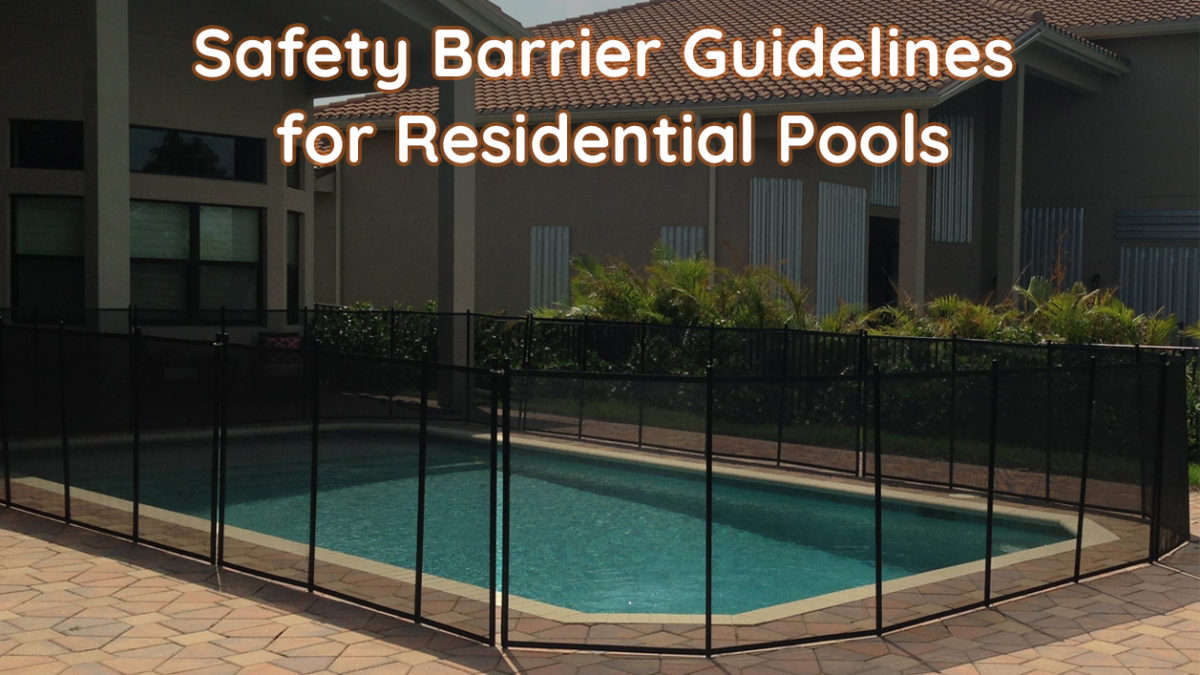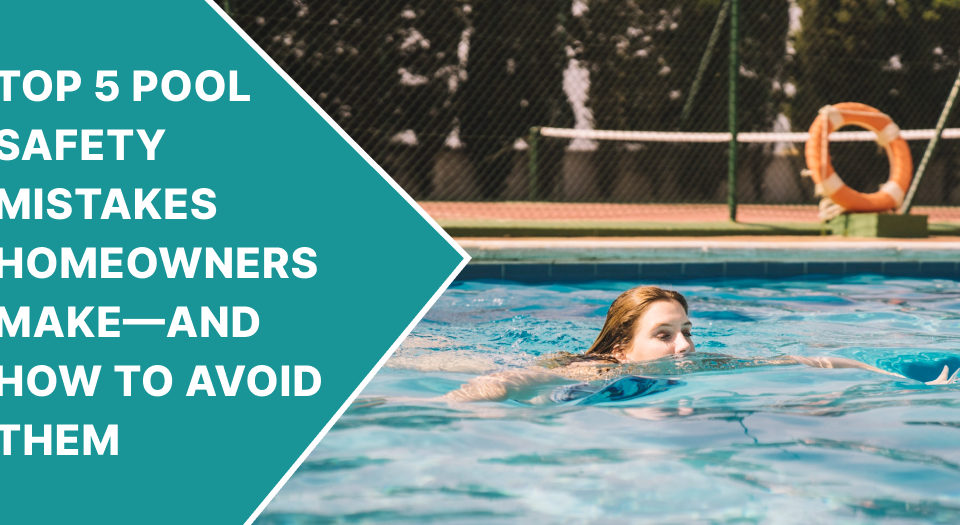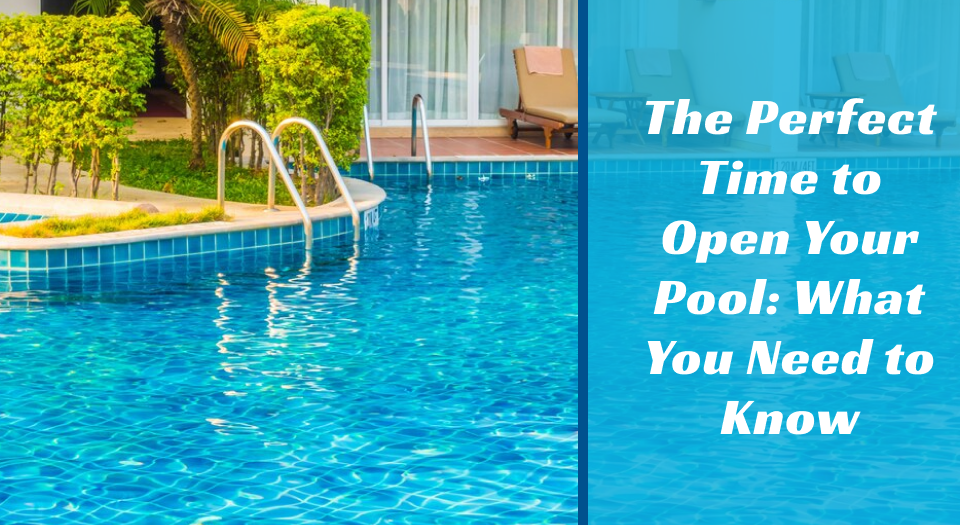
Things You Must Know About Installing A Pool Fence
November 1, 2019
Tips To Design Your Pool Fence Safety Enclosure
December 20, 2019As per the CPSC reports, “Children drowning is the second leading cause of accidental death around the home for children under 5 years of age.”
Every year, thousands of American families suffer swimming pool drowning tragedies. The majority of deaths and injuries in pools involve young children ages 1 to 3 and happen in residential swimming pools.
You can prevent these tragedies by installing barriers to your swimming pools.
Barriers for Swimming Pools
Barriers are not childproof but they offer additional layers of protection for a child when there is a lapse in adult supervision. However, you must ensure that barriers include a fence or wall, door alarms for the house, and a power safety cover over the pool.
1) Barrier Locations
Barriers should be located in such a way that it should prohibit permanent structures, equipment or similar objects that a child can use to climb the barriers.
2) Fences
When it comes to fences, make sure to install:
- A fence with a minimum height of 4 feet, although fences 5 feet or higher are preferable.
- The fence must have self-closing and self-latching devices or locks beyond the reach of children to prevent them from opening the door and gaining access to the pool.
If you don’t want to install a permanent fence, you can use a removable mesh fence. Just like other fences, the height of removable mesh fences should be a minimum of 48 inches. The fence must be designed in a way that the distance between vertical support poles and the attached mesh should prohibit a child’s ability to climb the fence.
3) Pool covers
Pool covers add another layer of protection to the swimming pool. To keep your swimming pool safe, make sure to maintain your pool covers regularly. Moreover, ensure to keep the control devices out of the reach of children.
4) Gates
You can find gates of two types – pedestrian gates and vehicles or other types of gates. Make sure to install a gate with a locking device.
5) Door alarms
The doors that offer access to a swimming pool should be equipped with an audible alarm that sounds when the door is opened. Install alarms that meet requirements of UL 2017 General-Purpose Signaling Devices and Systems, Section 77 with the following features:
- The alarm sound should last for 30 seconds or more within 7 seconds after the door is opened.
- The alarm should sound at least 85 dBA (decibels) when measured at a distance of 10 feet from the alarm mechanism.
- The sound of your alarm should be different from other sounds in the house, such as the doorbell, telephone, and smoke alarm.
- Install an alarm with an automatic reset feature that deactivates the alarm temporarily for up to 15 seconds and allow adults to pass through house doors without setting off the alarm.
Swimming Pool Barrier Guidelines
Toddlers are impulsive and lack a realistic sense of danger. These behaviors make swimming pools hazardous for young children. You can reduce the children drowning accidents in residential pools by installing barriers around the pools.
Whether you’ve outdoor swimming pools, including in-ground, above ground, or on-ground pools, hot tubs, or spas, ensure that your pool should have a barrier which complies with the following guidelines:
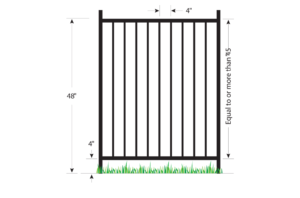
- The barrier top should be a minimum of 48 inches above the surface. It should be measured on the side of the barrier, facing away from the swimming pool.
- The maximum distance between the surface and the bottom of the barrier should be 4 inches. If you have a non-solid surface, grass or pebbles, the distance should be reduced to 2 inches, and 1 inch for removable mesh fences.
3. Openings in the barrier should be less than 4-inch in diameter.
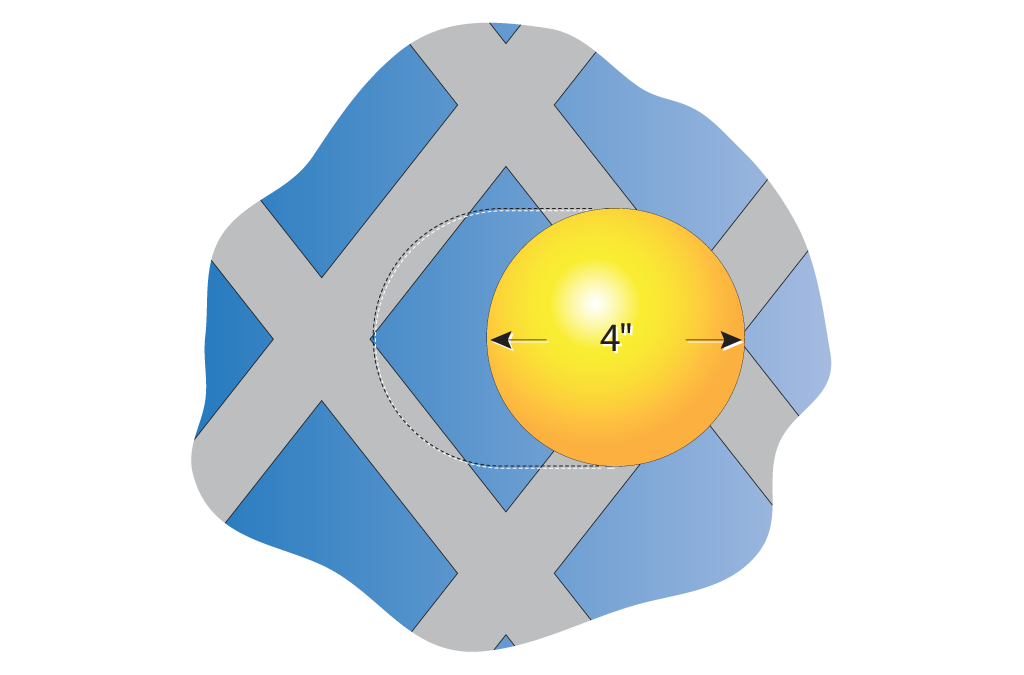
4. Solid barriers such as a stone-wall or masonry, should not contain indentations or protrusions except for normal construction tolerances and tooled masonry joints.
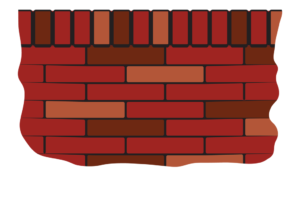
5. If the fence has horizontal and vertical members and the distance between them horizontal members is less than 45 inches, the horizontal members should be located on the swimming pool side of the fence.

6. The spacing between vertical members should not be more than 4 inches. This size of the barrier is based on the head breadth and chest depth of a young child and is intended to prevent a child from passing through an opening. If the barrier includes decorative cutouts, spacing within the cutouts should not exceed 1¾ inches in width.
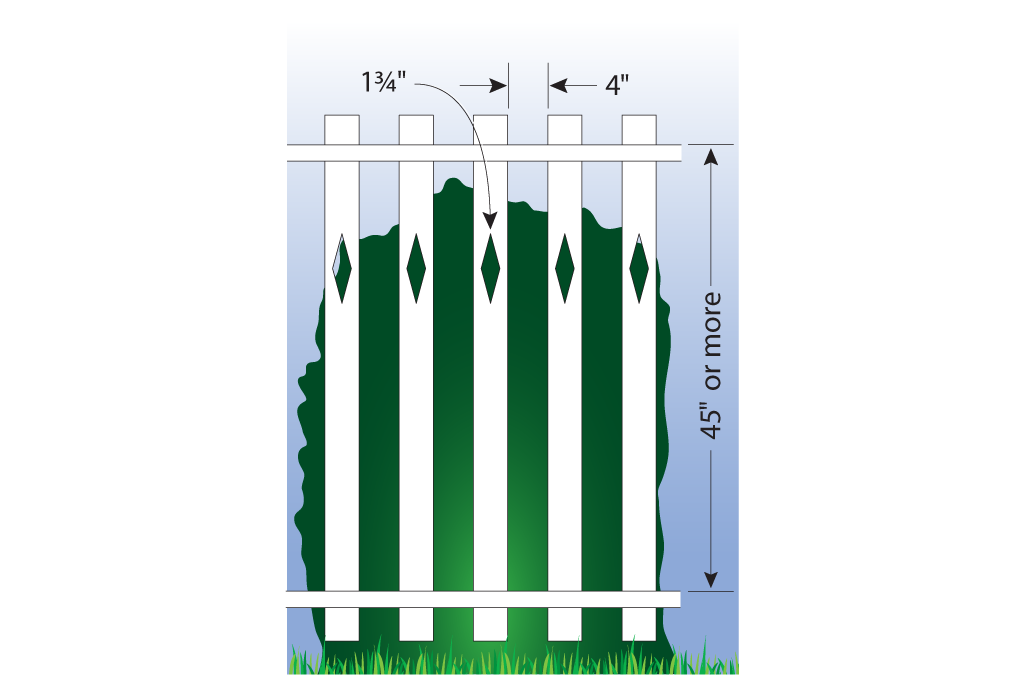
7. The ‘chain-link fences’ mesh size should not be more than 1¼ inch square unless the fence is provided with slats fastened at the top or the bottom which reduce the openings to no more than 1¾ inches.
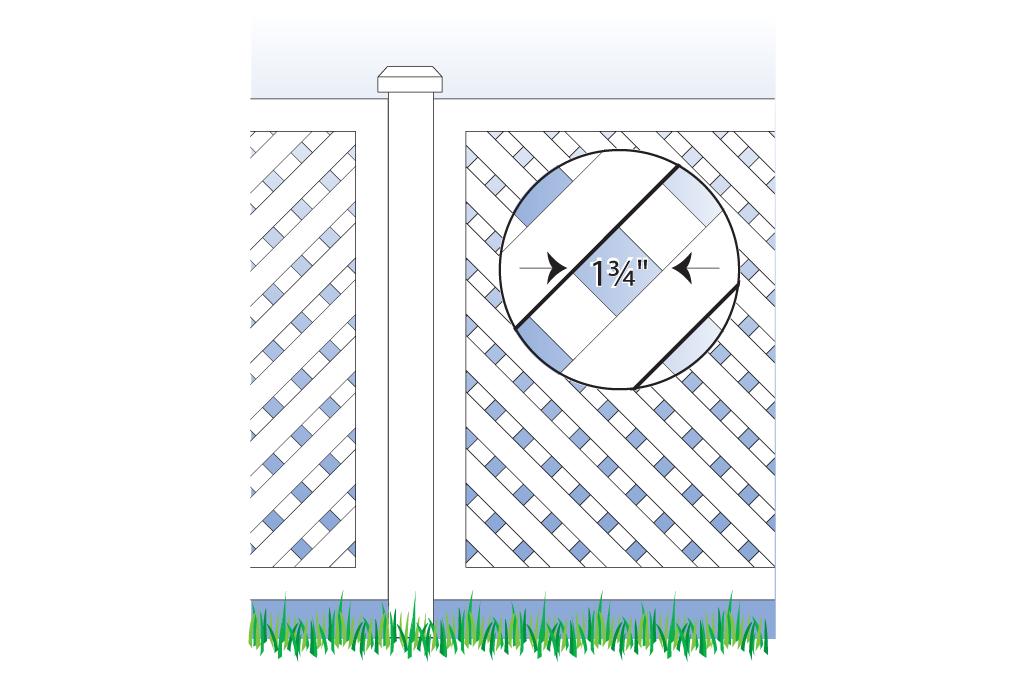
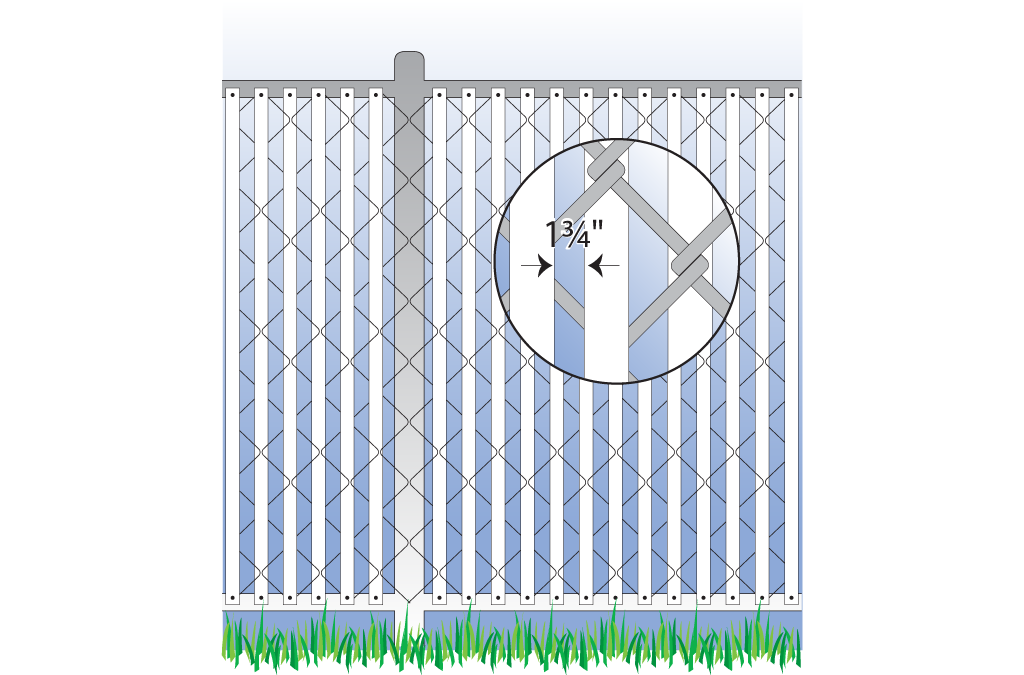
8. If the barrier has diagonal members like a lattice fence, the maximum opening formed by the diagonal members should be no more than 1¾ inches.

9. Swimming pool access gates must be equipped with a locking device. Moreover, pedestrian access gates should open outward, away from the pool, and must have self-closing and have a self-latching device.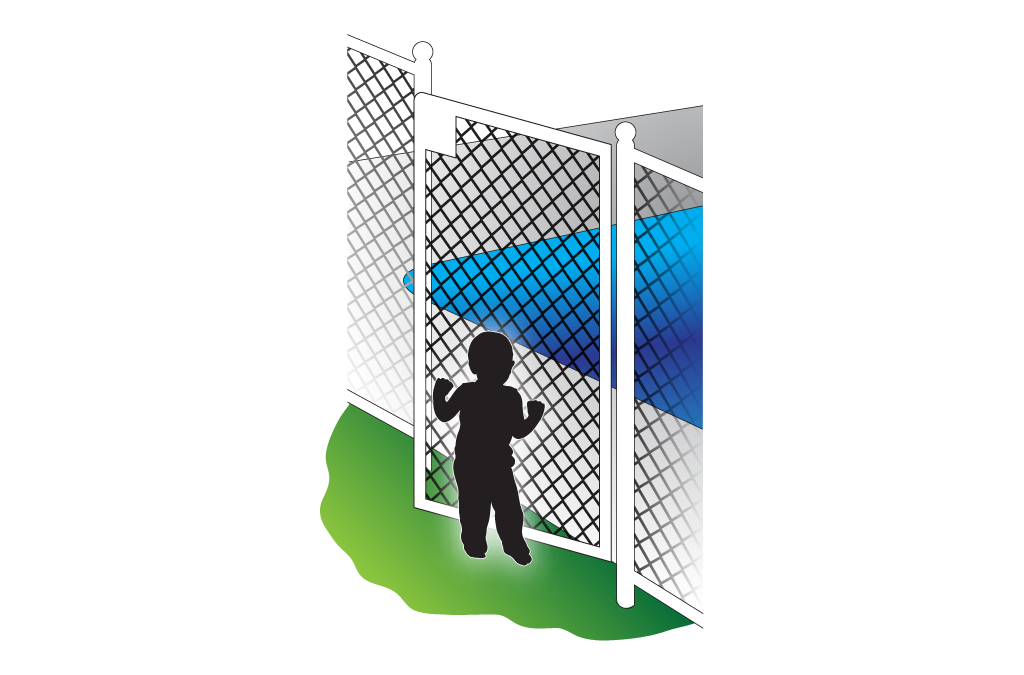
Gates other than pedestrian access should have a self-latching device:
- The release mechanism of the self-latching device must be located less than 54 inches from the bottom of the gate
- The release mechanism should be located on the poolside of the gate at least 3 inches below the top of the gate
- The openings of gate and barrier should not be greater than ½ inch within 18 inches of the release mechanism
10. If a wall of your house serves as part of the barrier, make sure to apply:
- All doors with direct access to the pool through that wall should be equipped with an alarm that produces an audible sound if someone touches or opens the door. Your alarm should meet the requirements of UL 2017 General-Purpose Signaling Devices and Systems, Section 77.
- The pool must have a power safety cover complied with ASTM F1346-91
- The pool must have self-closing doors with self-latching devices
11. If you have an above-ground pool structure, you probably are using stairs to access the swimming. In this case, make sure the ladder to the pool or steps should be capable of being secured, locked or removed to prevent access.
No matter how many precautions you take to keep your child safe but it’s always recommended not to leave them unsupervised near the pool.

